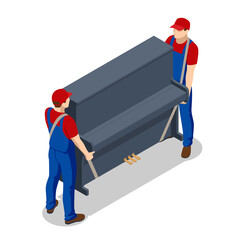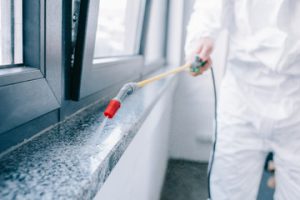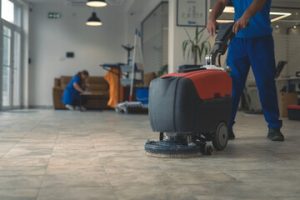Rubbish removal and demolition are changing in ways people rarely notice. Behind every cleared site lies a story of precision. The process today is more than just tearing down and hauling waste. It is about shaping environments quietly and efficiently.

Modern demolition has moved far from the image of sheer destruction. Controlled dismantling allows for careful separation of materials. Structures are now analyzed piece by piece before removal begins. This shift reduces both hazards and unnecessary waste. Visit paulsrubbishanddemo.com/ to learn more.
Rubbish removal follows the same transformation. Instead of bulk disposal, teams now sort items systematically. Materials that can be repurposed or recycled are set aside first. Only what has no further use is sent away.
The technology behind these processes is advancing rapidly. Remote-operated machinery minimizes risk for workers. Dust suppression tools maintain safer air quality. Even noise is managed more effectively than in the past.
Safety is now seen as a central concern. Demolition is planned through risk mapping and digital modeling. Workers wear smart protective gear linked to monitoring systems. These innovations prevent accidents and ensure smooth operations.
Environmental impact is another focus. Every demolished site leaves behind an ecological footprint. Reducing this footprint requires planning from start to finish. Waste tracking ensures that materials do not simply end up in landfills.
A surprising development is the rise of material recovery. Bricks, metals, and timber are salvaged for reuse. Some projects even treat salvaged items as part of their profit. What was once rubble now becomes a resource.
Designers and builders are responding to this trend. Many new buildings are planned with future demolition in mind. Materials are chosen for easier separation and recycling later. This concept is known as designing for deconstruction.
Digital tools are reshaping how rubbish removal is managed. Drones survey demolition sites before work begins. AI systems predict the volume of waste that will appear. These insights streamline schedules and reduce delays.
The logistics of hauling rubbish are also evolving. Routes are planned to minimize fuel consumption. Vehicles are designed to carry mixed loads more efficiently. Some fleets even operate with electric or hybrid engines.
Workers in the field are experiencing new skill demands. Knowledge of material sorting is now essential. Operating advanced machinery requires continuous training. The work is becoming less about brute force and more about technical precision.
Public perception of demolition is shifting as well. Instead of associating it with chaos, people see it as preparation. Rubbish removal symbolizes progress toward renewal. A cleared site is no longer an end, but a beginning.
Economic aspects are deeply tied to these practices. Salvaged materials can re-enter markets at lower costs. Efficient rubbish removal reduces expenses for construction projects. Demolition becomes both an environmental and financial strategy.
Urban development highlights these changes most clearly. Older structures are removed with minimal disruption. Surrounding communities benefit from safer, cleaner methods. The cityscape is reshaped without unnecessary harm.
Smaller projects are also adopting new methods. Home renovations involve selective demolition and waste sorting. Even minor rubbish removal follows careful procedures. The same principles apply at every scale.
Special attention is given to hazardous materials. Older buildings often contain asbestos or toxic substances. Removal now involves precision containment and disposal. These measures protect both workers and nearby residents.
Another trend is the integration of circular economy principles. Rubbish is no longer viewed as waste alone. It is seen as material waiting for transformation. Demolition acts as a channel for resource circulation.
Research continues to influence the field. Studies explore new ways to recycle complex materials. Innovations in crushing and separation make reuse easier. Knowledge grows with every project undertaken.
The labor force behind these operations is adapting. Teams are more diverse, with engineers, environmental experts, and technicians working together. Collaboration ensures every detail is managed. The result is greater efficiency and accountability.
Communication with communities plays an important role. Residents are often informed about schedules and impacts. Transparency builds trust in the demolition process. People see rubbish removal as part of organized progress.
Technology keeps reducing the margin for error. Sensors detect vibrations and prevent structural collapses. Real-time data is fed into management systems. Continuous monitoring keeps operations safe and on track.
There is also a cultural shift in how waste is valued. Items once discarded are now marketed creatively. Wood becomes furniture, metal becomes art, and stone becomes landscaping material. These uses give demolition byproducts a new identity.
Future developments suggest even greater transformations. Robotics may take over delicate dismantling entirely. Fully automated rubbish sorting could become common practice. Human oversight would focus on planning and quality control.
Climate concerns continue to shape the industry. Reduced emissions during demolition are a growing priority. Waste management strategies are aligned with carbon reduction goals. Every small adjustment contributes to long-term sustainability.
The influence of digital documentation cannot be overlooked. Every demolition is recorded for analysis and learning. Mistakes become lessons for future improvement. Successes set new standards across the industry.
Temporary storage facilities are designed with efficiency in mind. Waste is staged, processed, and redirected quickly. Nothing sits longer than it needs to. Speed and order replace clutter and delay.
Education supports these shifts by training the next workforce. Courses now include environmental and technical aspects of demolition. Students learn about both machinery and sustainability. The next generation is prepared for evolving demands.
Insurance companies have also adapted. Policies reward projects that follow safer, greener practices. Compliance with guidelines lowers risk and cost. The business side reinforces responsible demolition and rubbish removal.
Communities now value projects that leave positive legacies. A space cleared today often becomes tomorrow’s hub. Residents appreciate when demolition feels purposeful. Waste removal becomes a sign of renewal rather than loss.
Temporary reuse of cleared sites is gaining popularity. Empty lots host gardens, markets, or events. This prevents urban decay while awaiting construction. Waste removal thus connects to community revitalization.
Unexpected partnerships are forming around the industry. Artists collaborate with demolition teams to salvage materials. Startups design tools to track waste flows. Collaborations fuel both creativity and innovation.
The balance between speed and care defines the field. Quick removals must still follow careful planning. Demolition and rubbish removal succeed when both are respected. Efficiency and precision work hand in hand.
As awareness grows, consumers also play a role. People now request responsible waste handling in their projects. This demand pushes companies toward sustainable methods. The market drives ethical rubbish removal.
A quiet transformation is happening worldwide. What once seemed like destruction is becoming a form of renewal. Rubbish removal and demolition are no longer just about clearing space. They are about preparing for sustainable futures.
This evolution reflects a broader mindset. Waste and rubble are not ends but transitions. Every cleared structure opens the way for something better. Demolition has become an art of beginnings.
The journey continues as innovation never stops. Machines, methods, and mindsets will keep evolving. What remains constant is the need for balance. Rubbish removal and demolition shape not just spaces, but the future of living itself.








